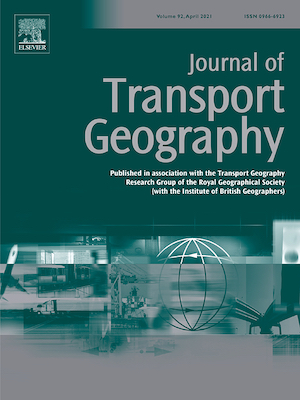Publication : « Modelling context-specific relationships between neighbourhood socioeconomic disadvantage and private car use » by Julie Bulteau
Feuillet T., Bulteau J., Dantan S., (2021). Modelling context-specific relationships between neighbourhood socioeconomic disadvantage and private car use. Journal of transport geography, 93, 103060 (hal-03202534)

Car use generates negative externalities, which are responsible for many health, environmental and economic problems. To tackle this issue, more work is needed to identify better the correlates of car use, especially at the contextual level. In this study, a mobility-focused questionnaire involving 1722 working French adults living in the Paris area (France) was used to explore gender-stratified relationships between residential socioeconomic deprivation and car use as the main transport mode against public transport, after controlling for potential confounders. While the vast majority of similar studies have assumed linear and global statistical relationships, the present work involved a random slope hierarchical generalised additive modelling framework, which revealed both non-linear and territorially-varying relationships. Among women, living in a more deprived neighbourhood was associated with an increase in the odds of reporting car use up to a certain threshold, after which the relationship plateaued, while among men, this relationship is linearly negative. In the most deprived department of the Paris region (Seine-Saint-Denis), living in a more deprived neighbourhood was associated with a lower odds of car use among men while a more complex nonlinear bell-shaped relationship was observed among women. The opposite was found in the wealthiest department (Yvelines), with a negative relationship among women and a U-shaped one among men. In Paris inner city, again a strong opposite trend was distinguished according to sex, with a negative relationship among women. These findings suggest that spatial contexts, characterised by complex interactions between socioeconomic factors, the built environment and the distance to Paris, play the role of moderators in the relationship between residential deprivation and car use. In conclusion, this study reinforces the idea that environment-transport relationships should be understood through local analyses (e.g. random slope multilevel or spatially-varying coefficients models) rather than global ones only, in order to guide specific public policies more effectively.



